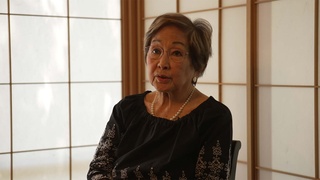Interviews
Tracing my family crest
I’ve already traced back to the city that I was from, or my roots were from. I’ve found the kamon, which is this. This is the kamon, the Inoue Hiroshima kamon. This was hard to find. I went into the kamon book, which is Inoue family crest book. I looked up Inoue, and there were hundreds of Inoues. Every family has their own mark. And so I said, okay, I had to call my grandfather. He found out he was from Hiroshima. I went into the Hiroshima Inoue, and then I had 30 or 40 of them. I was about to give up. I was thinking, I’m just going to choose the nicest one—no one would ever know—and just tattoo it on my body. And then it so happened that my father called me one day and said that there was a mon, a family crest, up at his mother’s place, the Inoue house. So I had them take a picture, send it to me. And we found exactly which one it was. So yeah, I went down enough that far to find out what city I’m from, Hiroshima, and my family crest.
Date: October 14, 2003
Location: Saitama, Japan
Interviewer: Art Nomura
Contributed by: Art Nomura, Finding Home.













